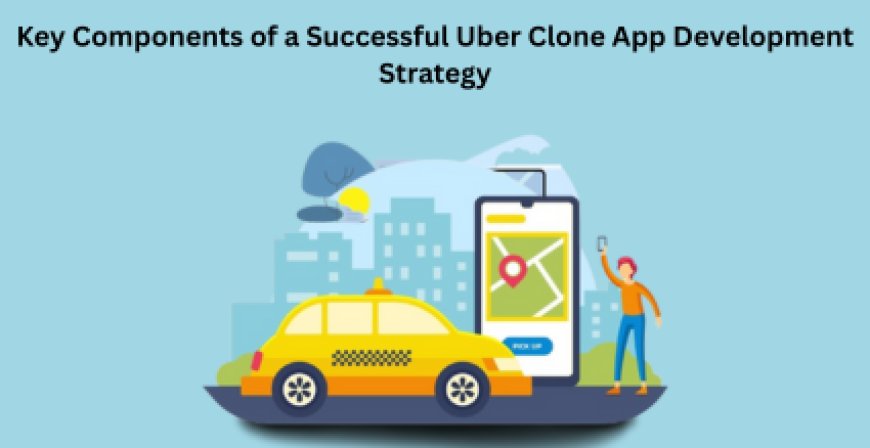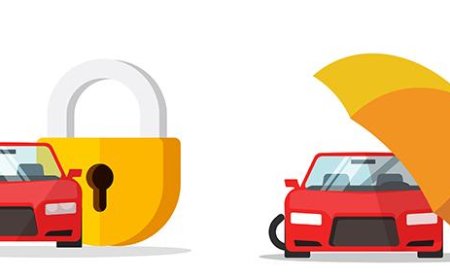Key Components of a Successful Uber Clone App Development Strategy
Building a taxi app? Discover the key components every Uber clone app development strategy must include to ensure long-term success, scalability, and profits.

Ride-hailing businesses have reshaped urban mobility across the globe. While Uber pioneered the model, startups and enterprises are now tapping into this opportunity by launching their own apps usingUber clone app development. But to stand out and succeed in this competitive space, you need more than just featuresyou need a solid development strategy.
This blog outlines the key components of a successful Uber clone app development strategy to help you launch a scalable, efficient, and profitable ride-hailing platform.
Understanding the Business Model First
Before diving into development, clarity on the business model is crucial. Your strategy should define:
- Revenue Model: Commission per ride, subscription plans for drivers, surge pricing, and corporate ride plans.
- Target Market: Will you serve urban areas, Tier 2 cities, or niche markets like women-only rides?
- User Segments: Riders, drivers, and fleet ownerseach group needs tailored features and experiences.
- Growth Vision: Start with one region or city, and scale to multiple markets as traction builds.
Having a clearly defined Taxi App Business Model helps align your apps features, design, and monetization strategy.
Choosing the Right Development Approach
You can choose from three main options:
- Build from Scratch: Offers maximum customization but takes time and large budgets.
- Use an Uber Clone Script: Speeds up time-to-market with a pre-built codebase that can be customized.
- White-Label Solution: Comes with branding and deployment done for you by a clone app development company.
For startups and mid-sized enterprises, starting with a clone app is the most cost-effective and scalable option.
Key User-Focused Features to Include
Rider App Features
- Quick Registration: Allow sign-up via email, phone, or social login.
- Real-Time Tracking: Enable riders to track vehicles live on the map.
- Estimated Fare Calculation: Show upfront fares before booking.
- In-App Payments: Support cards, UPI, wallets, and cash.
- Trip History & Receipts: Riders should access past rides and invoices.
- Rating & Feedback: Build a trust system through reviews.
Driver App Features
- Easy Onboarding: Streamlined document upload and profile approval.
- Earnings Dashboard: Show completed rides and daily income.
- Route Optimization: Navigation through GPS or Google Maps API.
- Ride Acceptance Toggle: Allow drivers to go online or offline.
- Support Access: Quick access to FAQs and contact support.
Admin Panel Features
- Manage Users and Drivers: Approve accounts, monitor performance.
- Control Pricing and Commission: Edit fare structures and revenue share.
- Analytics Dashboard: Monitor real-time data on bookings, earnings, and performance.
- Promo Codes & Discounts: Run marketing campaigns with offers.
- Dispute Resolution: Review and resolve complaints.
Scalable Tech Stack Selection
The tech stack you choose will directly impact app performance, user experience, and long-term scalability.
- Frontend: Flutter or React Native (cross-platform)
- Backend: Node.js, Django, or Laravel (based on real-time needs)
- Database: MongoDB or PostgreSQL
- Maps: Google Maps API, Mapbox
- Push Notifications: Firebase or OneSignal
- Cloud Hosting: AWS, Google Cloud, or DigitalOcean
Opt for a microservices architecture if you plan for multi-city or multi-country expansion in the future.
Read More: Start a Ride-Hailing Business with Taxi Clone App
Strong Security & Compliance Standards
Data breaches or poor security practices can break your business. Implement these from day one:
- Secure Authentication: OTP-based logins and two-factor authentication.
- Data Encryption: SSL/TLS encryption for data in transit and at rest.
- GDPR Compliance: Ensure user data control, transparency, and portability.
- Payment Gateway Compliance: PCI-DSS certified integrations.
- Regular Audits: Perform security audits on app code and APIs.
Local Customization & Language Support
Your Uber clone app must adapt to the preferences and needs of local users:
- Multi-Language Support: Offer regional language options in both rider and driver apps.
- Currency and Tax Settings: Include regional tax rates, surcharges, and currency conversion.
- Location-Based Fare Rules: Allow admin to set distance, time, and surge pricing by city or region.
Customization boosts adoption and helps your app feel made for the market.
Marketing & User Acquisition Plan
A great app means nothing without users. Your development strategy must include a go-to-market and growth plan.
- Driver Onboarding Campaigns: Incentivize sign-ups with joining bonuses.
- Referral Programs: Reward users for inviting friends to the platform.
- Social Media Promotions: Use reels, stories, and influencer partnerships.
- Local Partnerships: Tie up with hotels, corporate parks, and events.
- SEO & ASO: Optimize your website and app store listings for visibility.
Real-Time Analytics & Feedback Loops
Use in-app analytics to make informed product decisions:
- Track daily active users, trip volumes, peak hours.
- Identify drop-off points in the booking flow.
- Use heatmaps to spot demand hotspots.
- Regularly collect feedback from users via surveys and ratings.
Actively analyzing data helps you iterate fast and stay ahead of user expectations.
Monetization Strategy Alignment
Its not just about launchingits about earning. Consider blending multiple revenue streams:
- Ride Commission: Fixed or variable percentage from each ride.
- Surge Pricing: Automatically applied during high demand.
- Ad Placements: In-app ads or banner space for local businesses.
- Subscription Plans: For fleet operators or frequent business riders.
- Corporate Accounts: Premium services for organizations with recurring transportation needs.
Each model can be tested and adjusted over time based on user behavior and market feedback.
Post-Launch Maintenance & Updates
Your development strategy doesnt stop at launch. Ensure:
- Regular App Updates: Fix bugs, release features, and improve UI/UX.
- Backend Monitoring: Use tools like Sentry or Datadog for crash reports.
- Customer Support System: Offer real-time help via chat, email, or in-app ticketing.
- Feedback Loop: Let users request features or report issues easily.
- Ongoing Optimization: Continuously track performance and optimize APIs, queries, and server loads.
Sustained success depends on long-term product maintenance and user trust.
Conclusion
An Uber clone app gives startups and enterprises a rapid way to enter the on-demand mobility market, but its success depends on much more than replicating features. A strategic approach covering user needs, development technology, localization, growth planning, and monetization is essential.
By building your platform with a strong focus on scalability, real-time functionality, and user satisfactionand by working with the right clone app development companyyou can create a taxi app that not only competes but leads in your local market and beyond.
FAQs
What is the biggest advantage of using an Uber clone app?
It allows you to launch your ride-hailing business faster and more cost-effectively by using a pre-built, customizable solution.
Can I customize the Uber clone script for my business?
Yes, most clone scripts are fully customizable, allowing you to change branding, features, pricing models, and more.
How long does it take to build a taxi app using a clone?
If you're using a white-label clone script, your MVP can go live in 36 weeks depending on customizations.
What is the cost of Uber clone app development?
It typically ranges between $5,000 to $50,000+ based on the features, platform (iOS/Android), and third-party integrations.
Is it scalable for multi-city or international operations?
Yes, when built on a modular architecture with cloud hosting, Uber clone apps can support multi-city and multilingual rollouts effectively.































